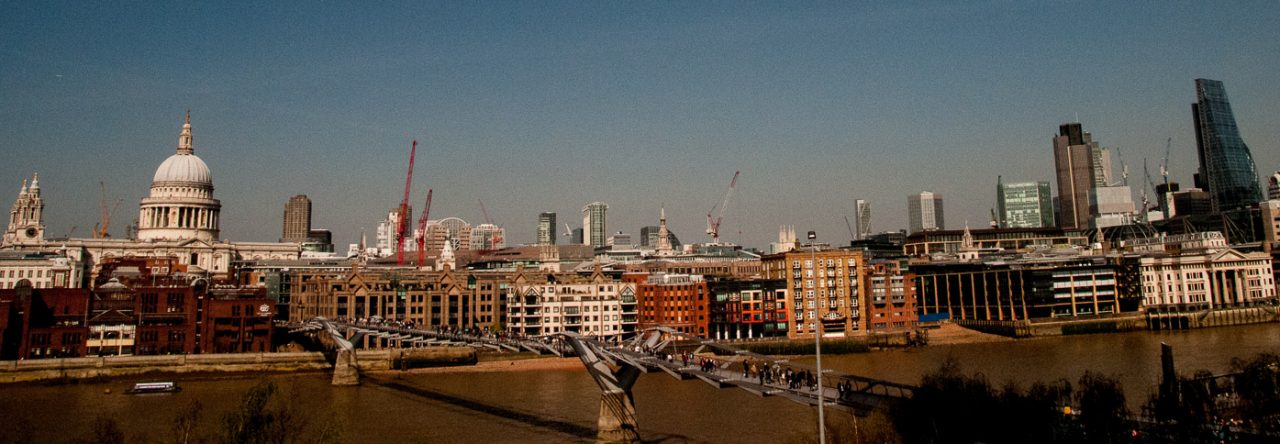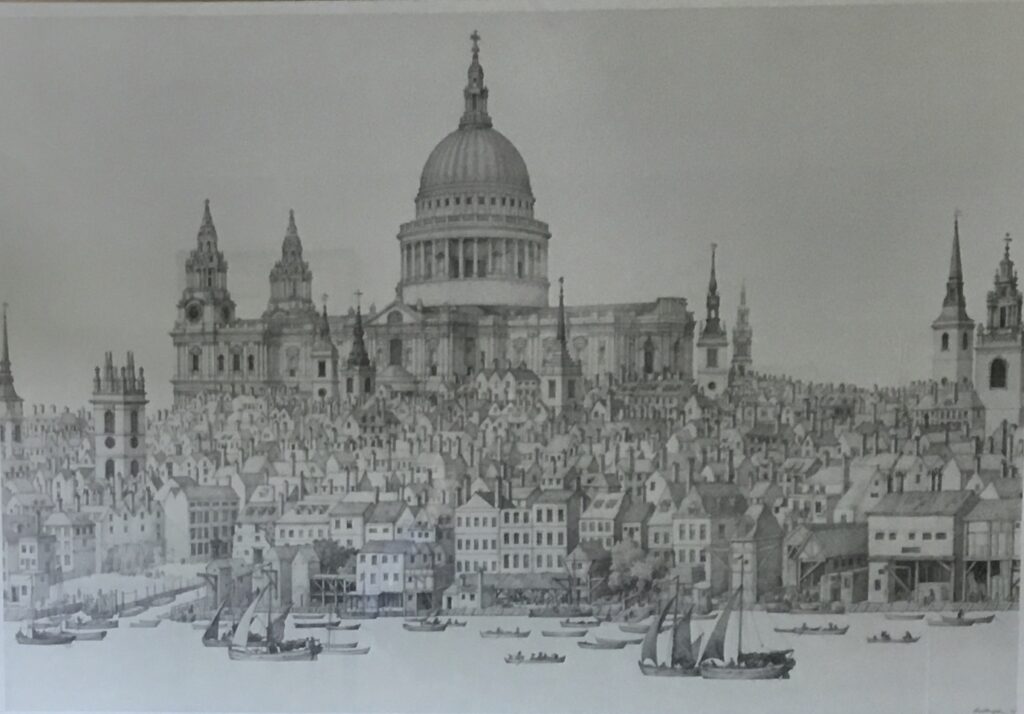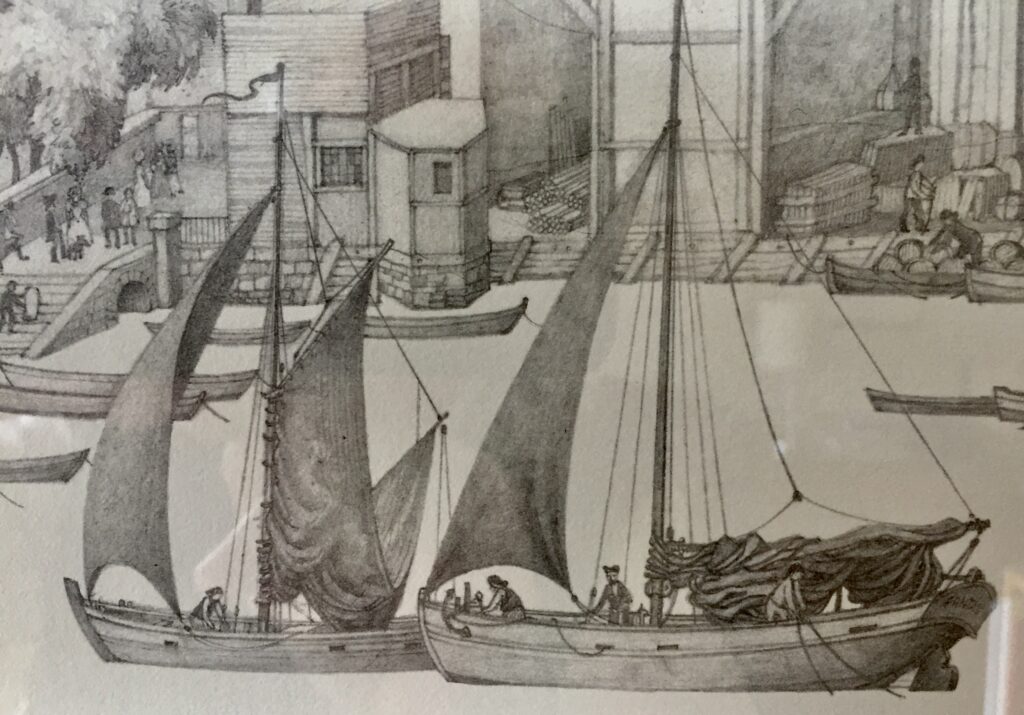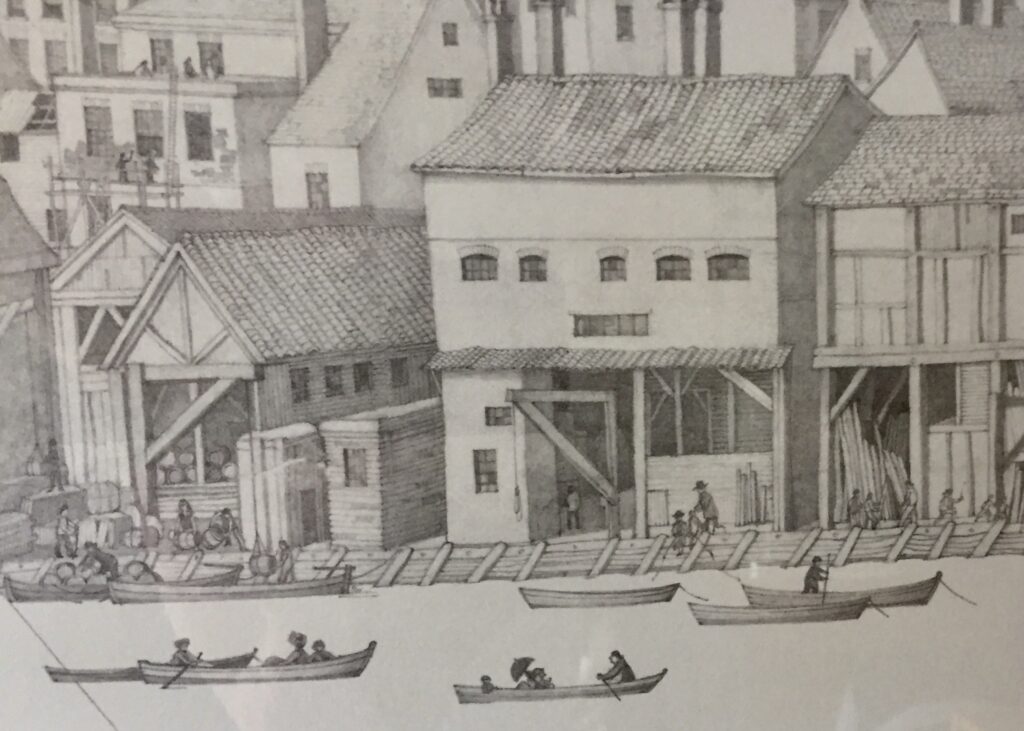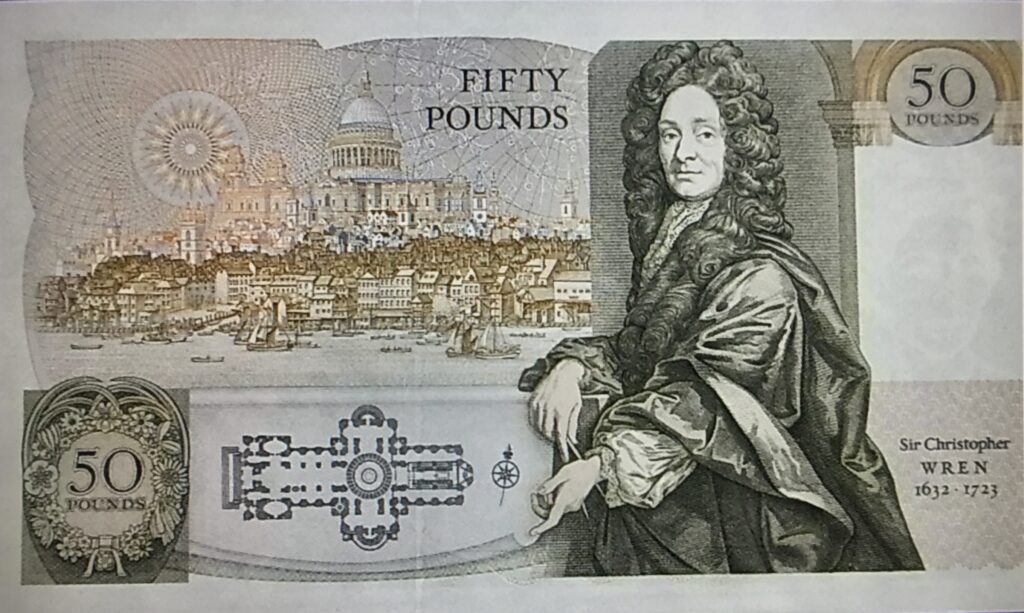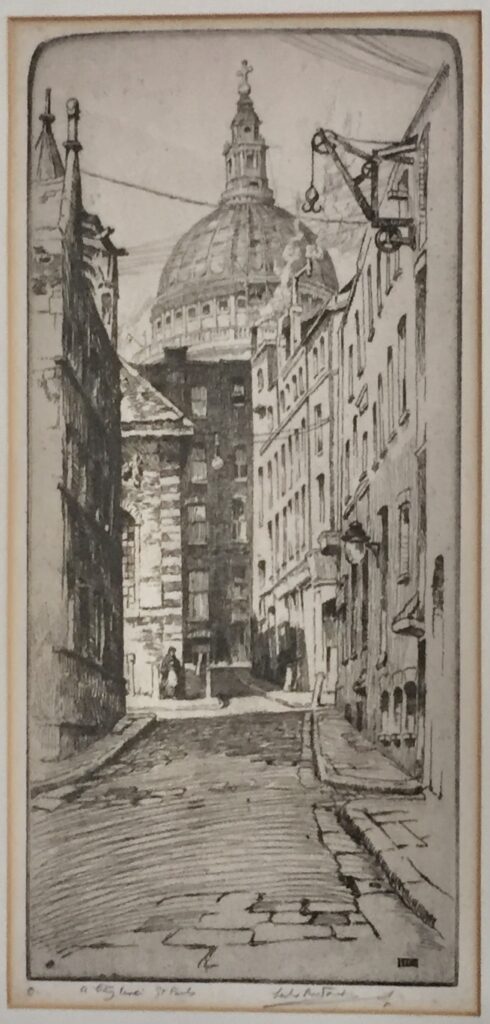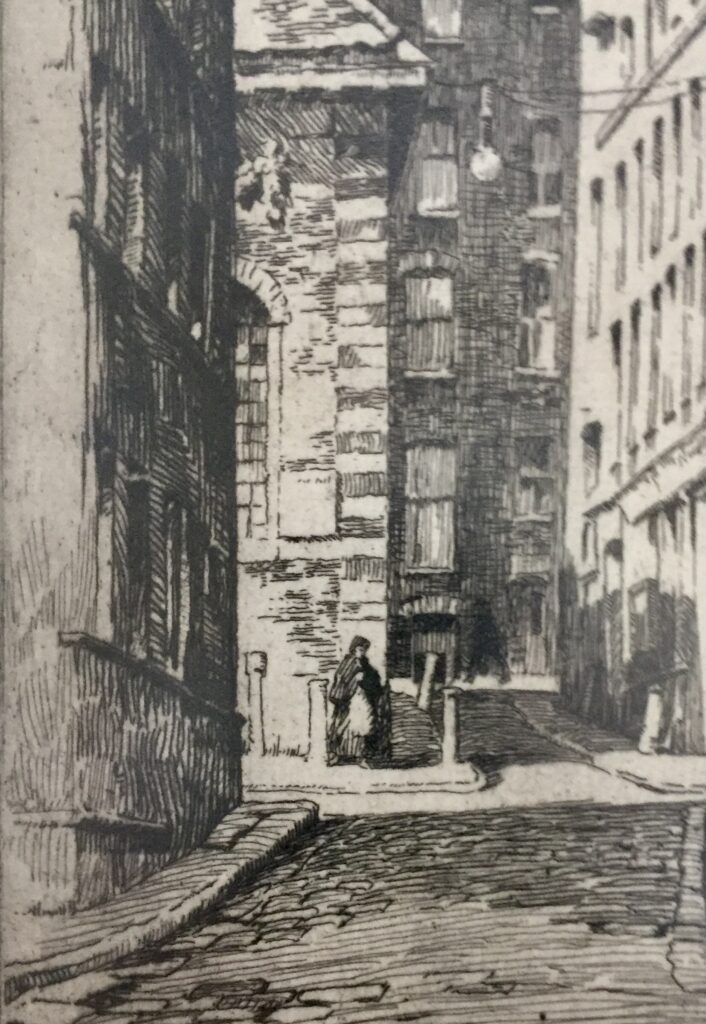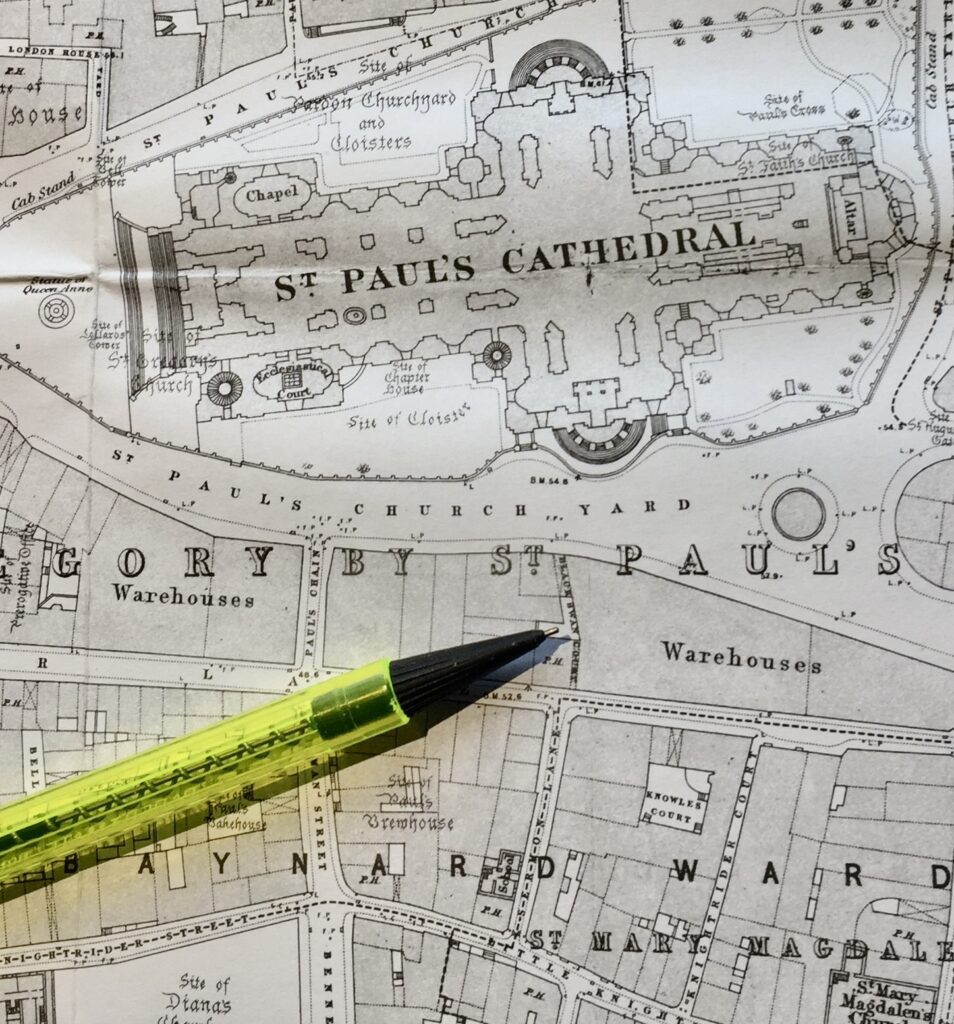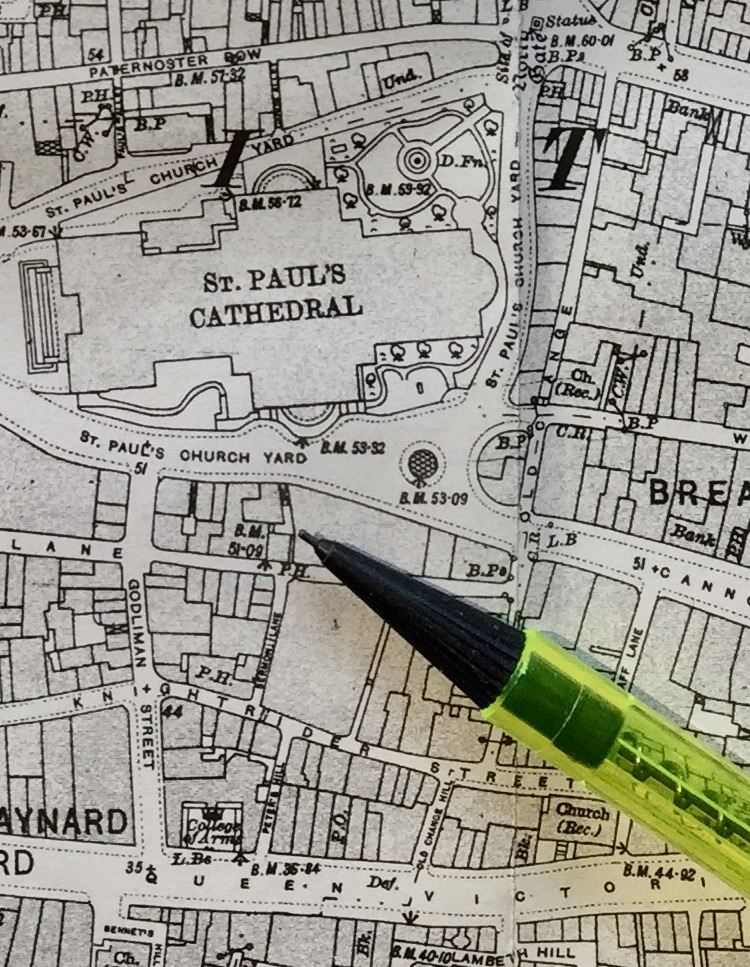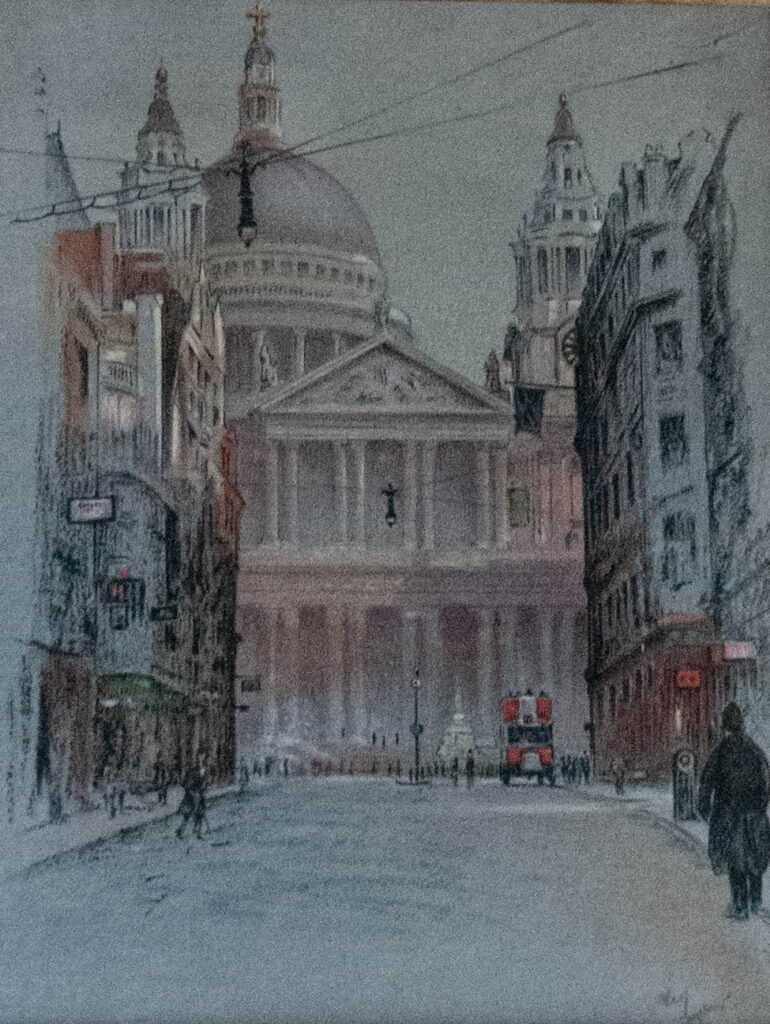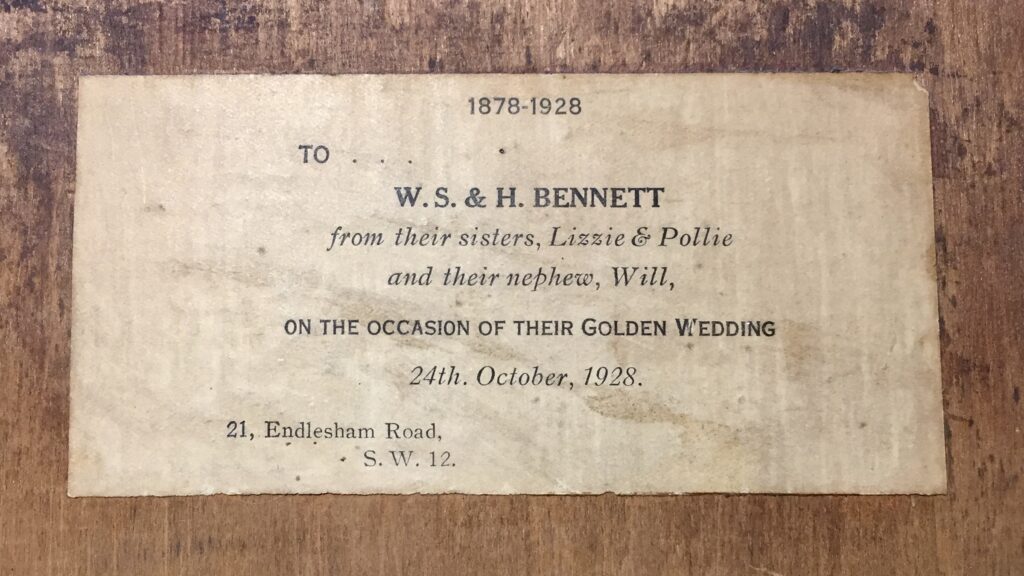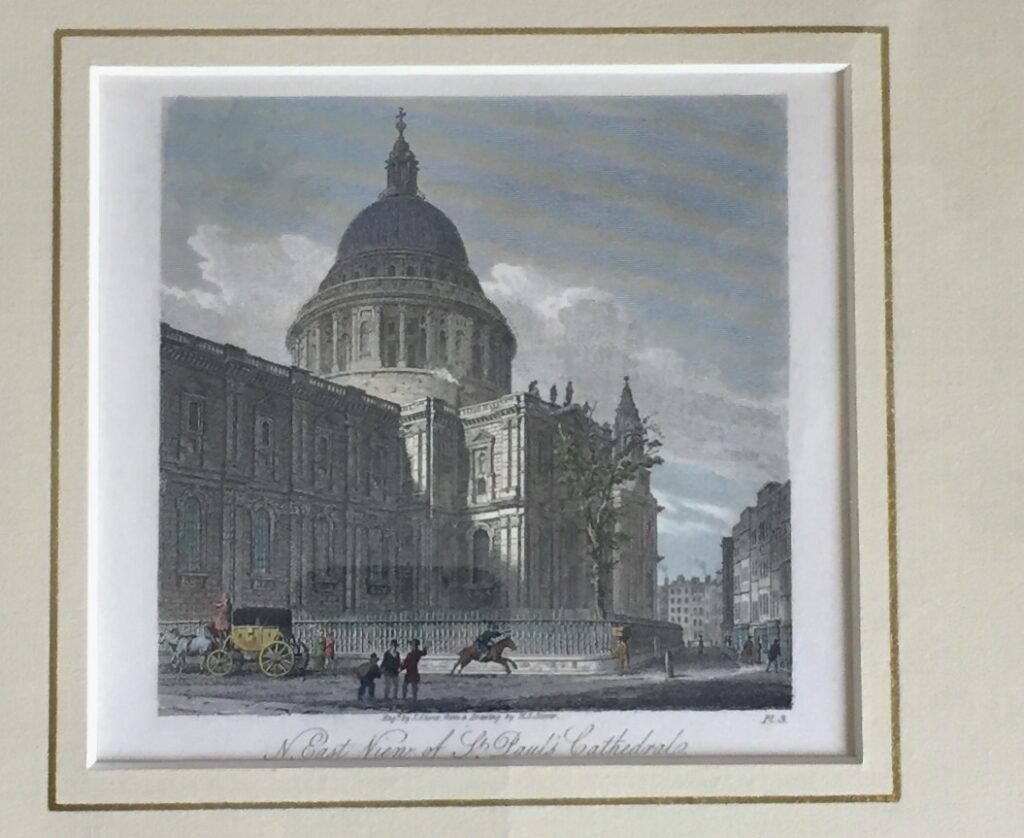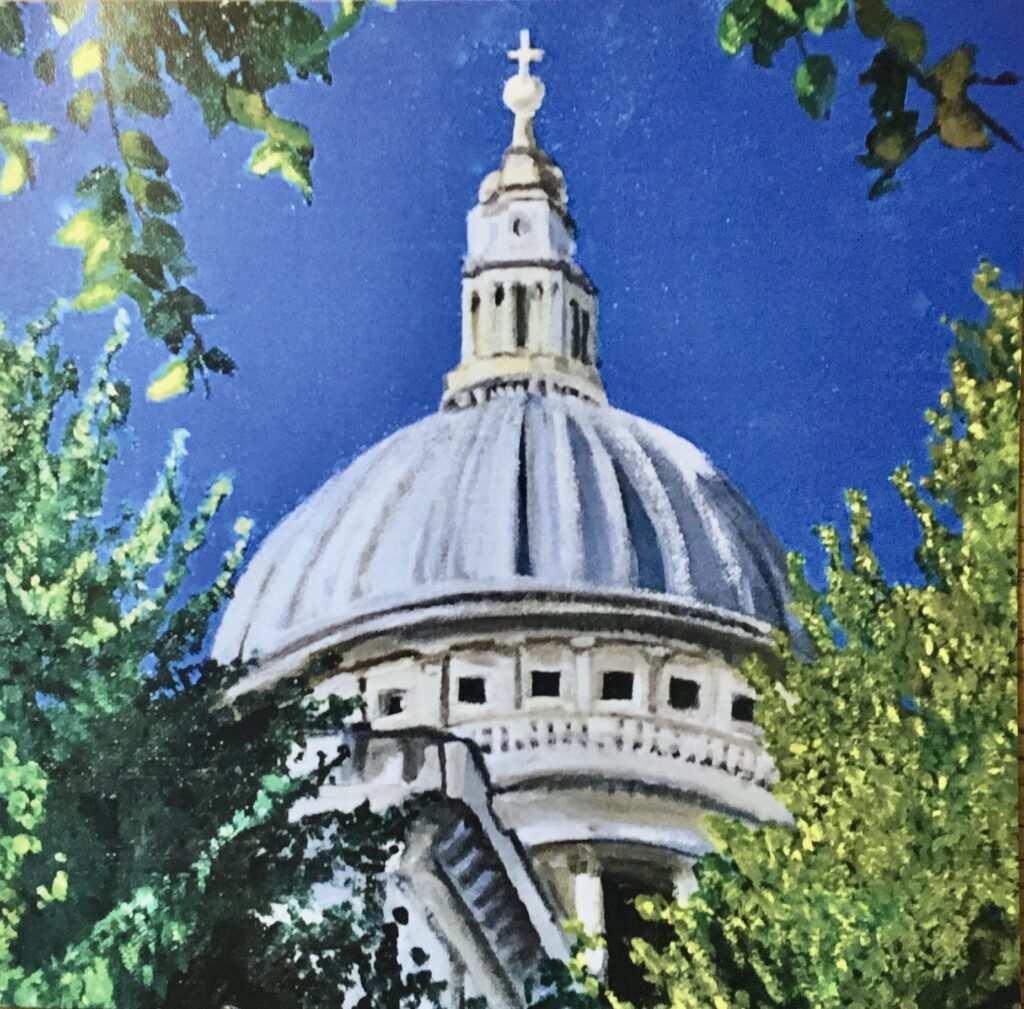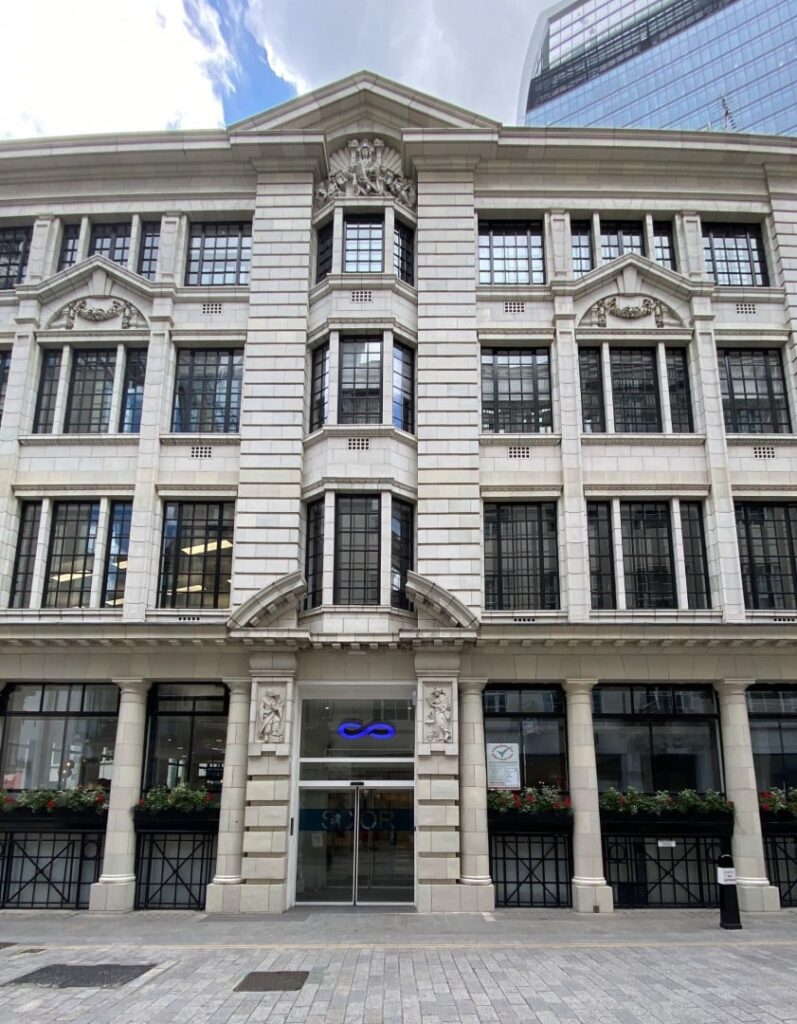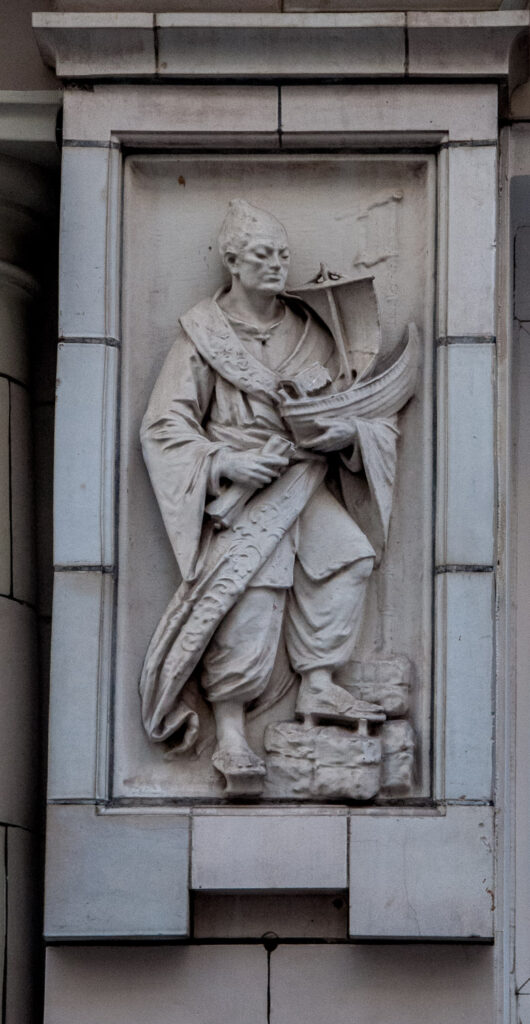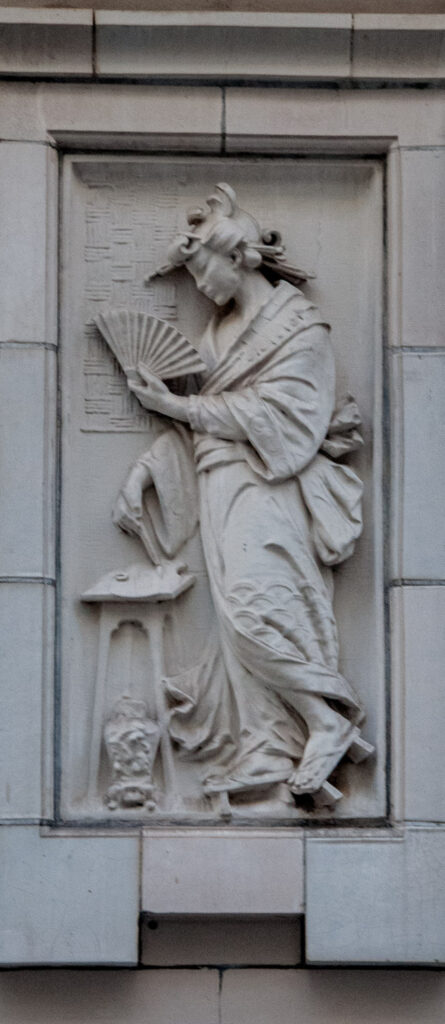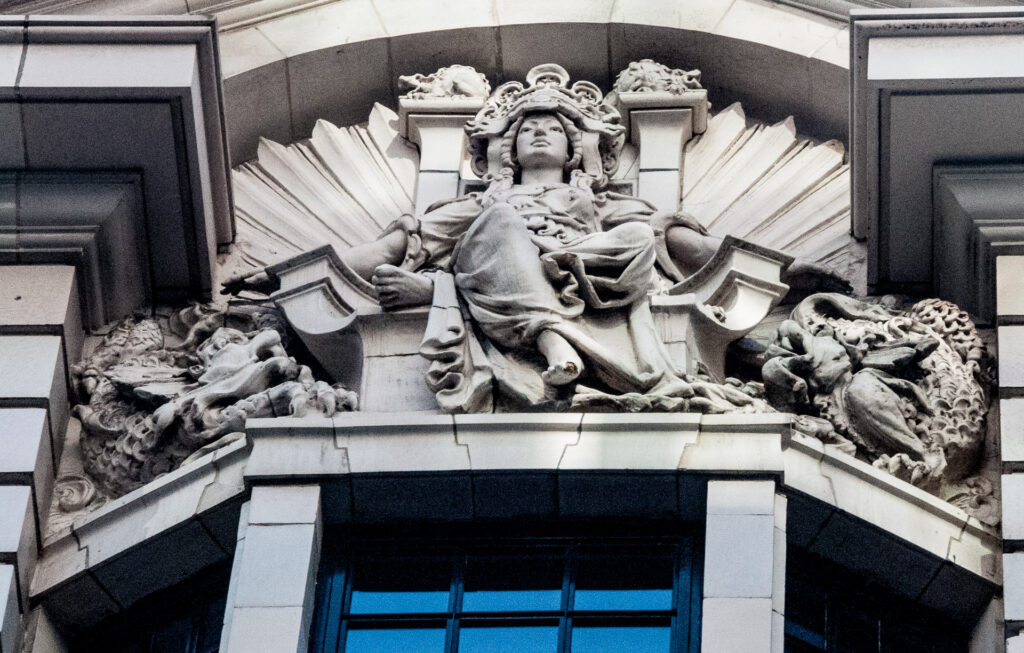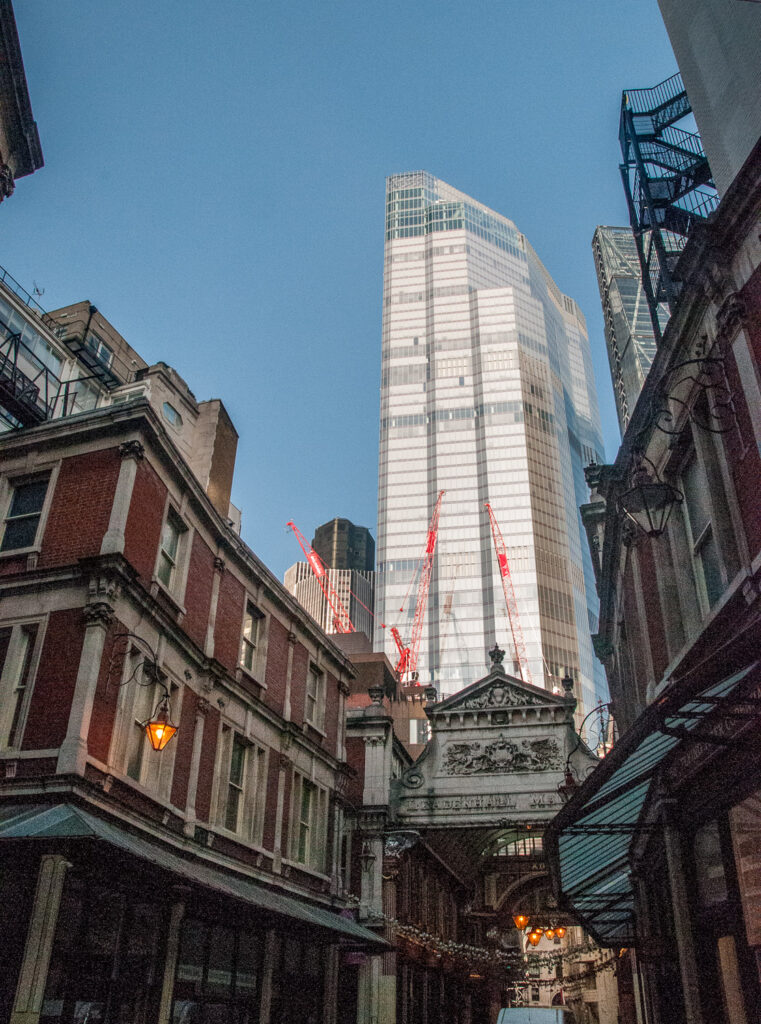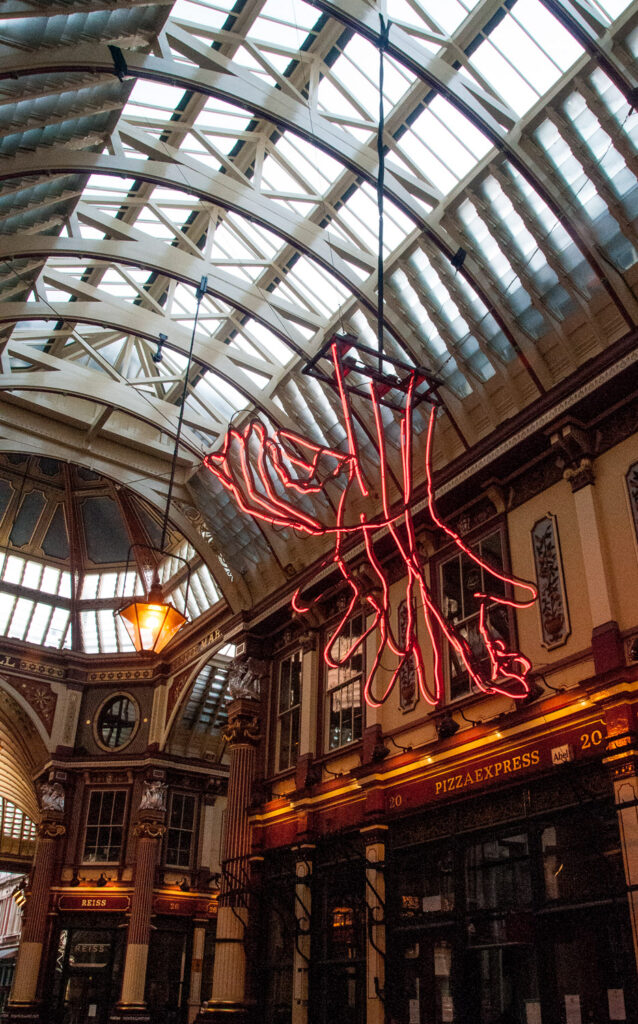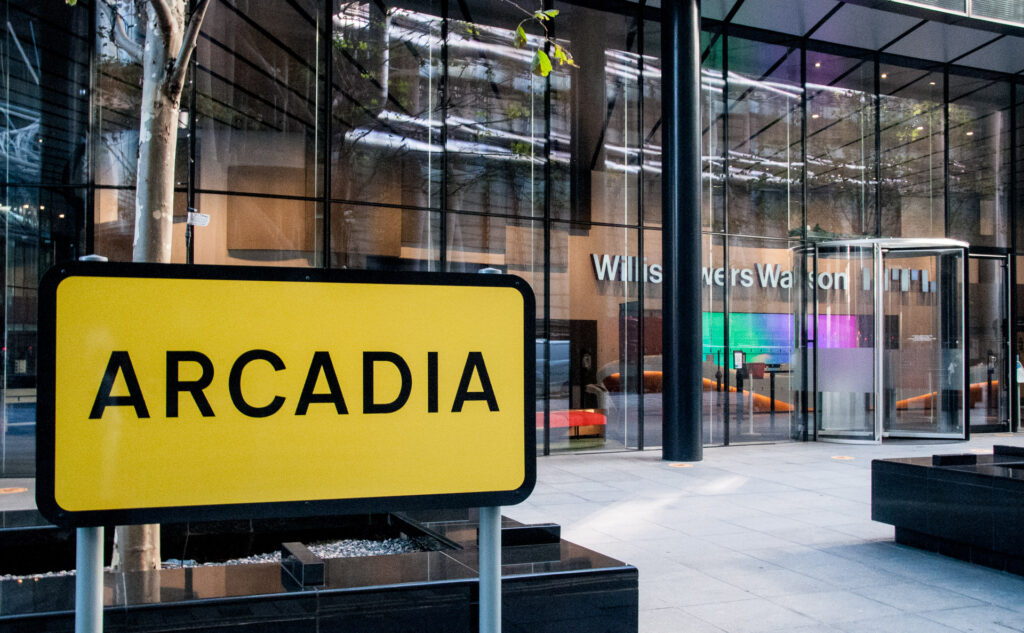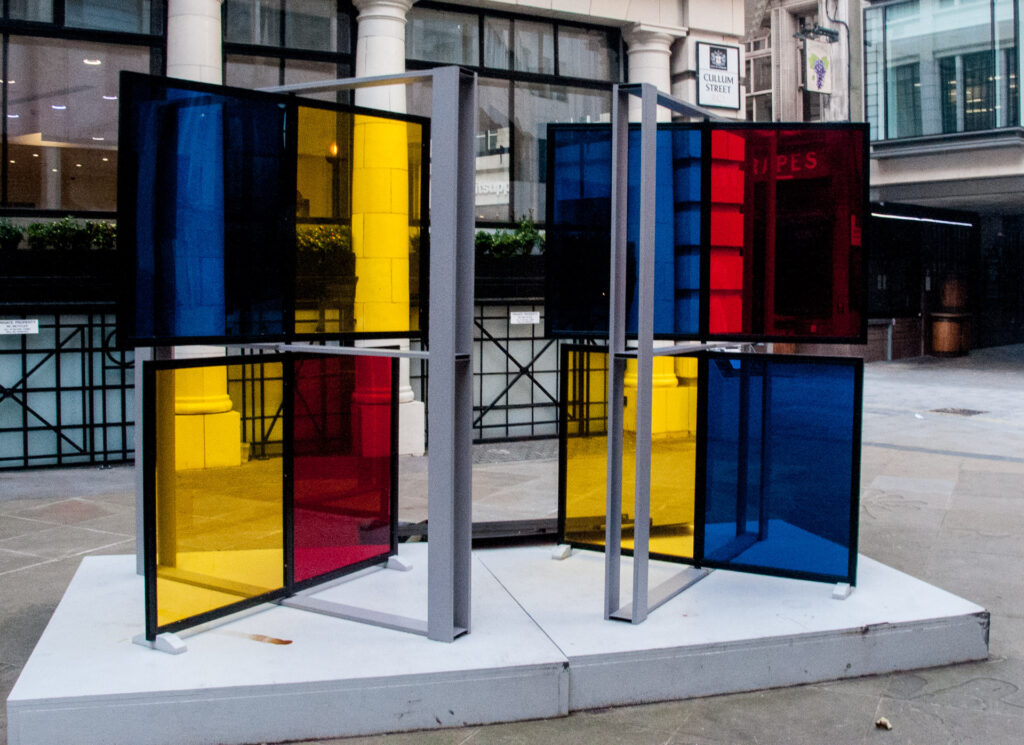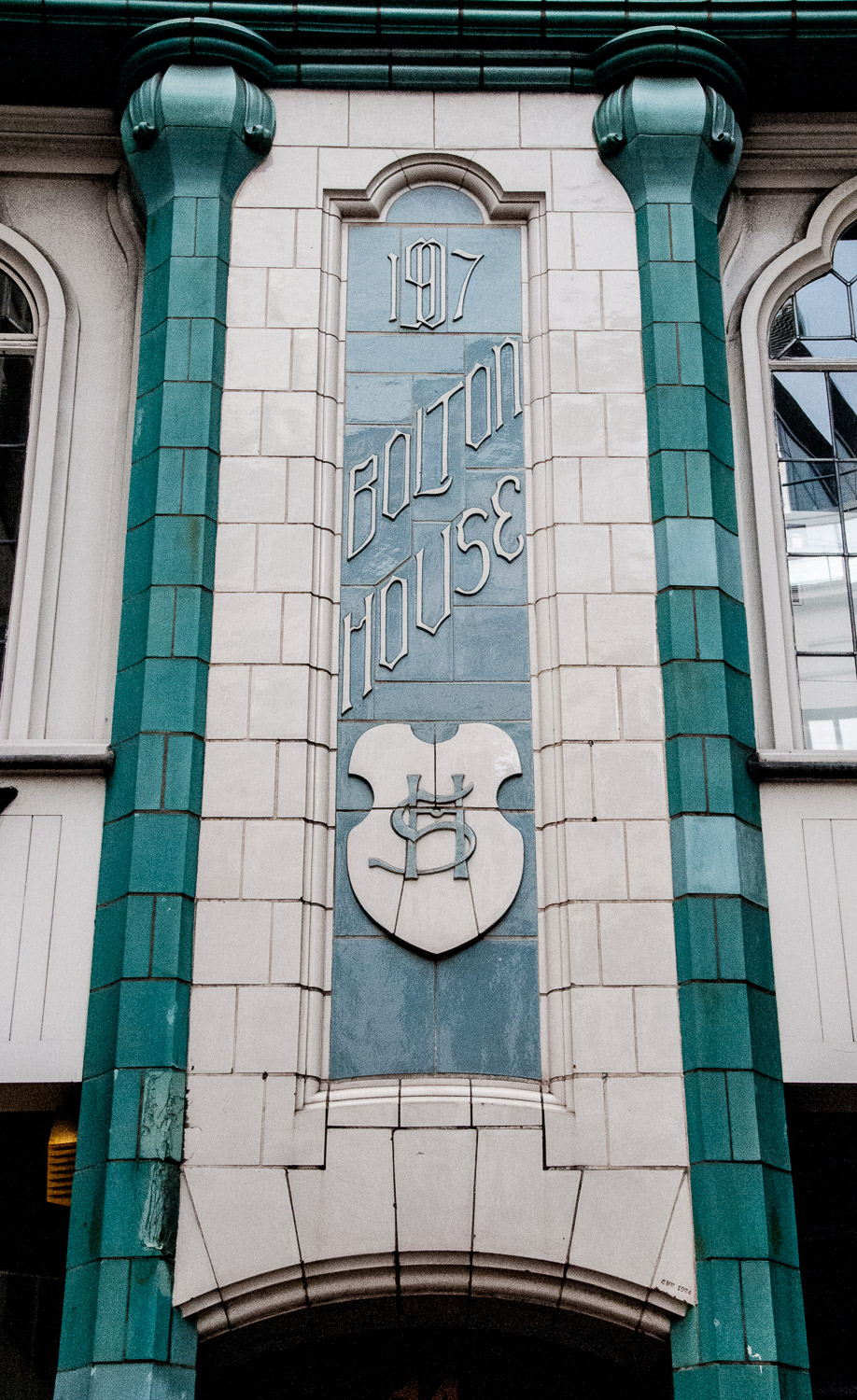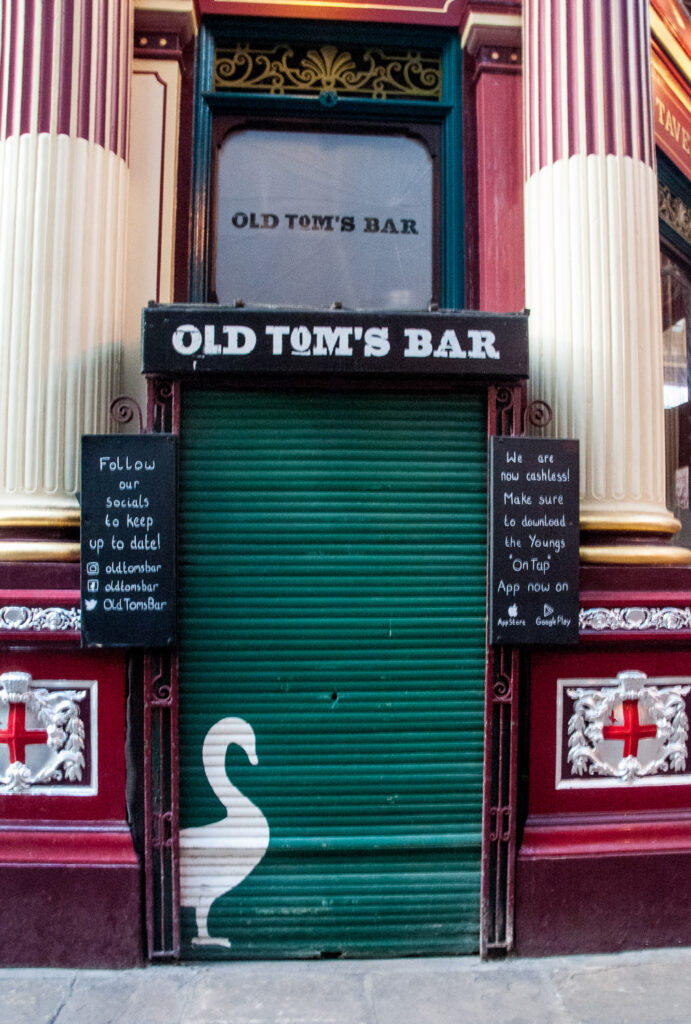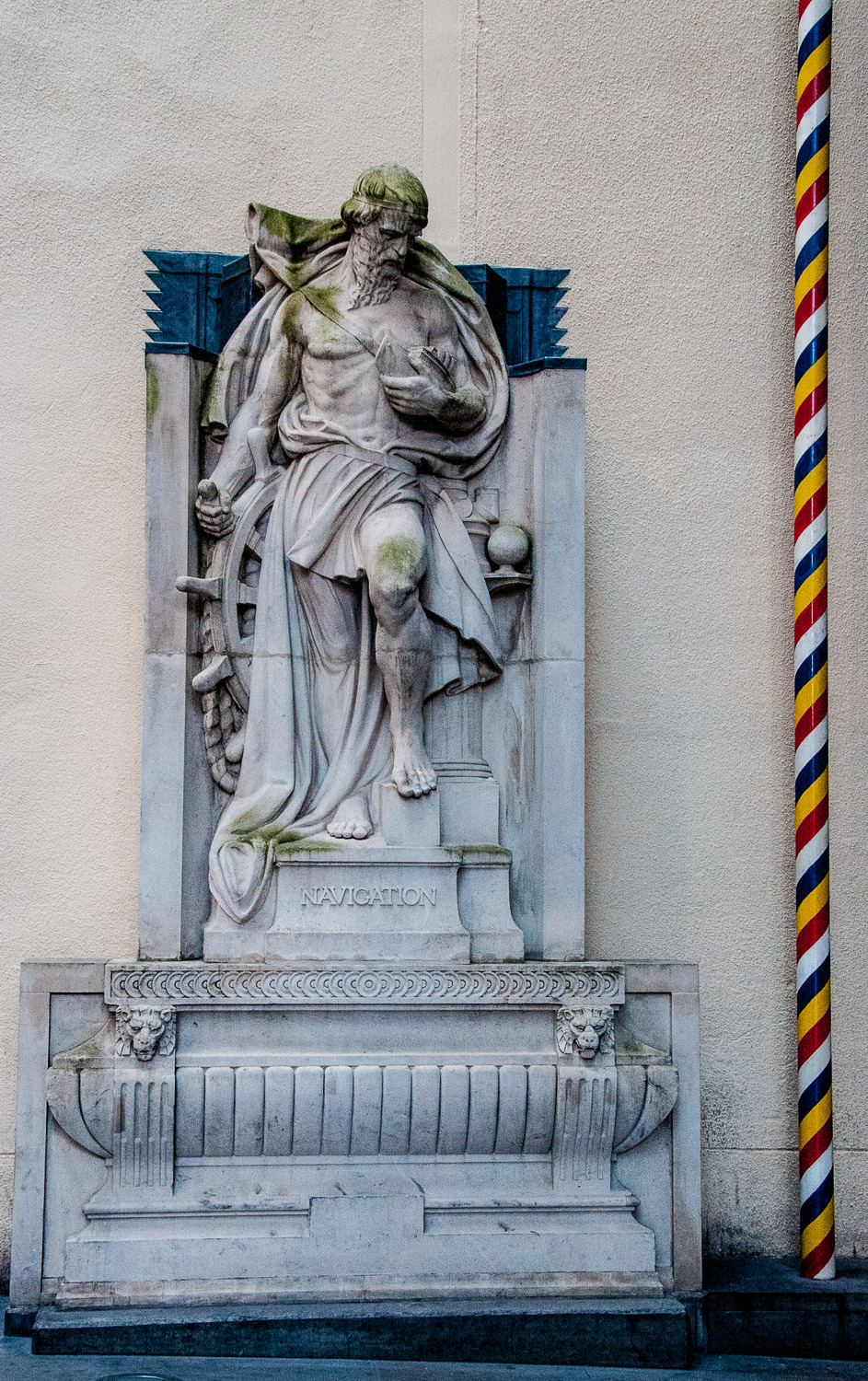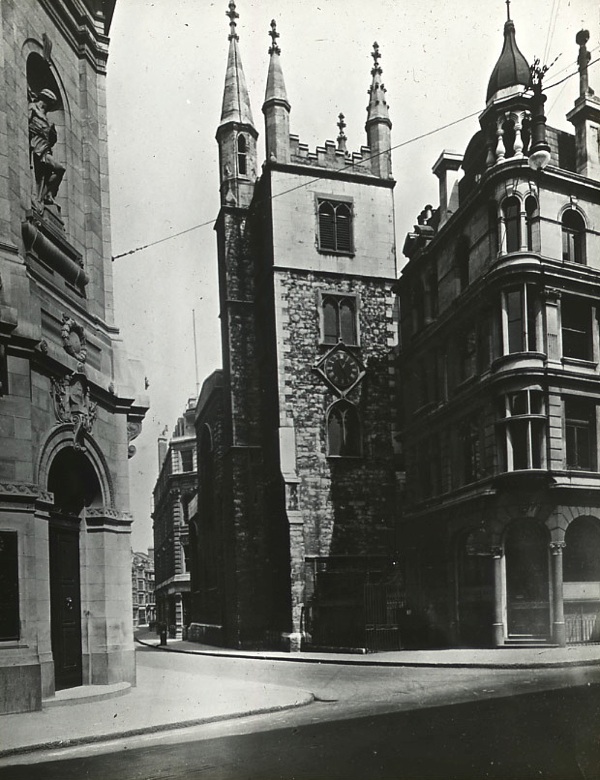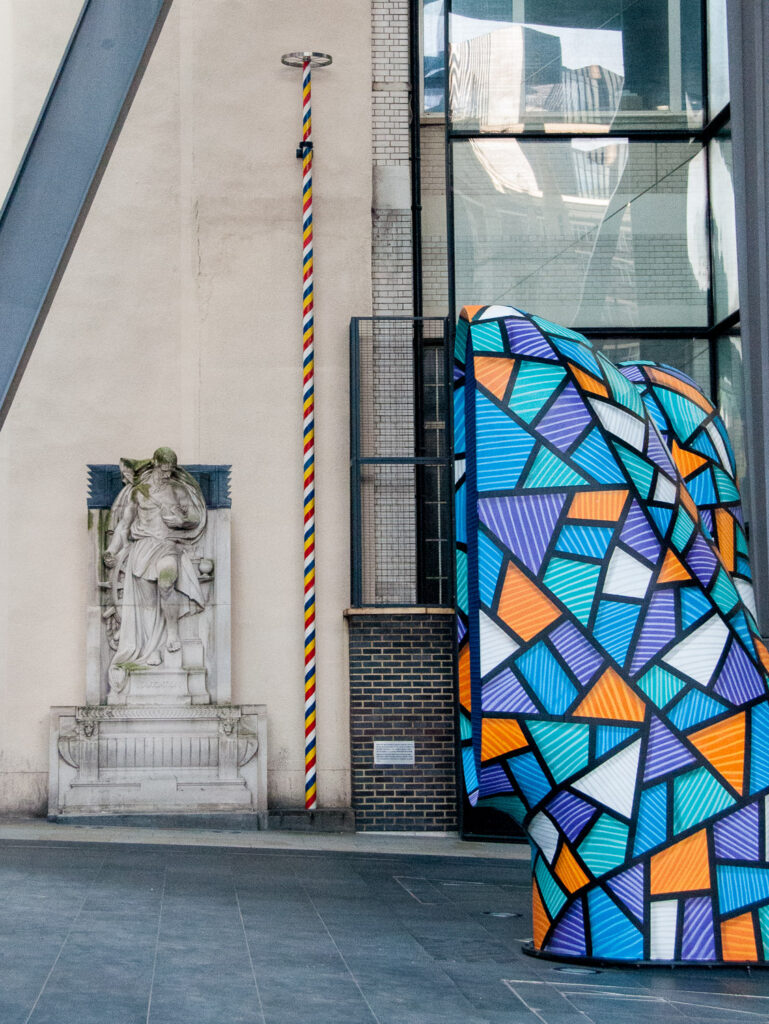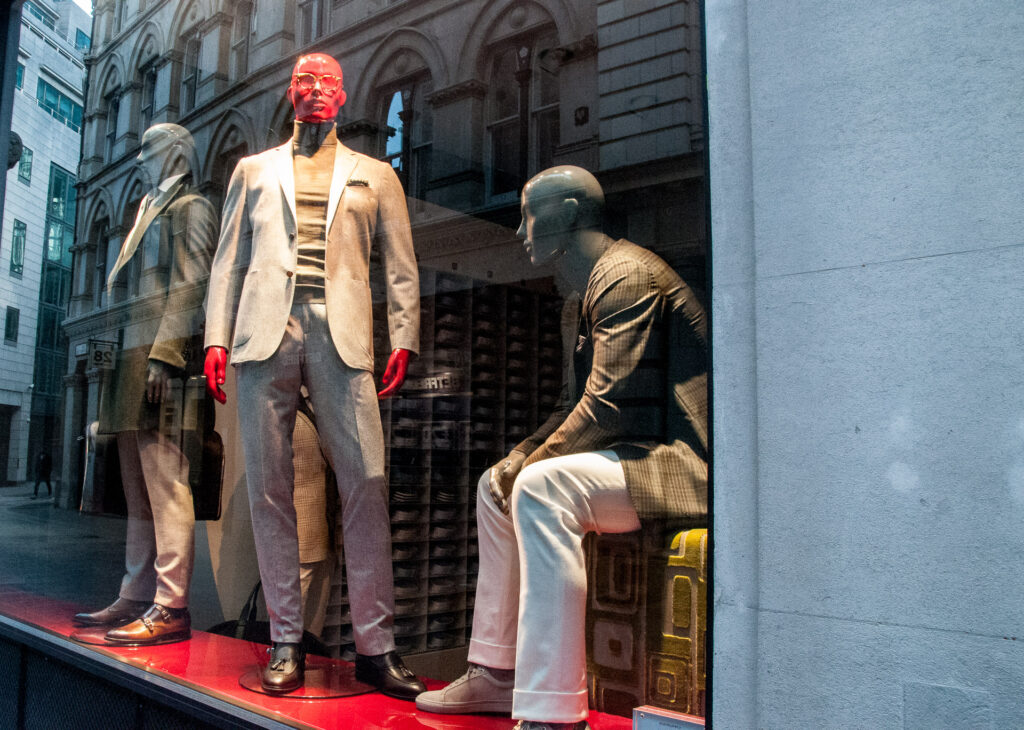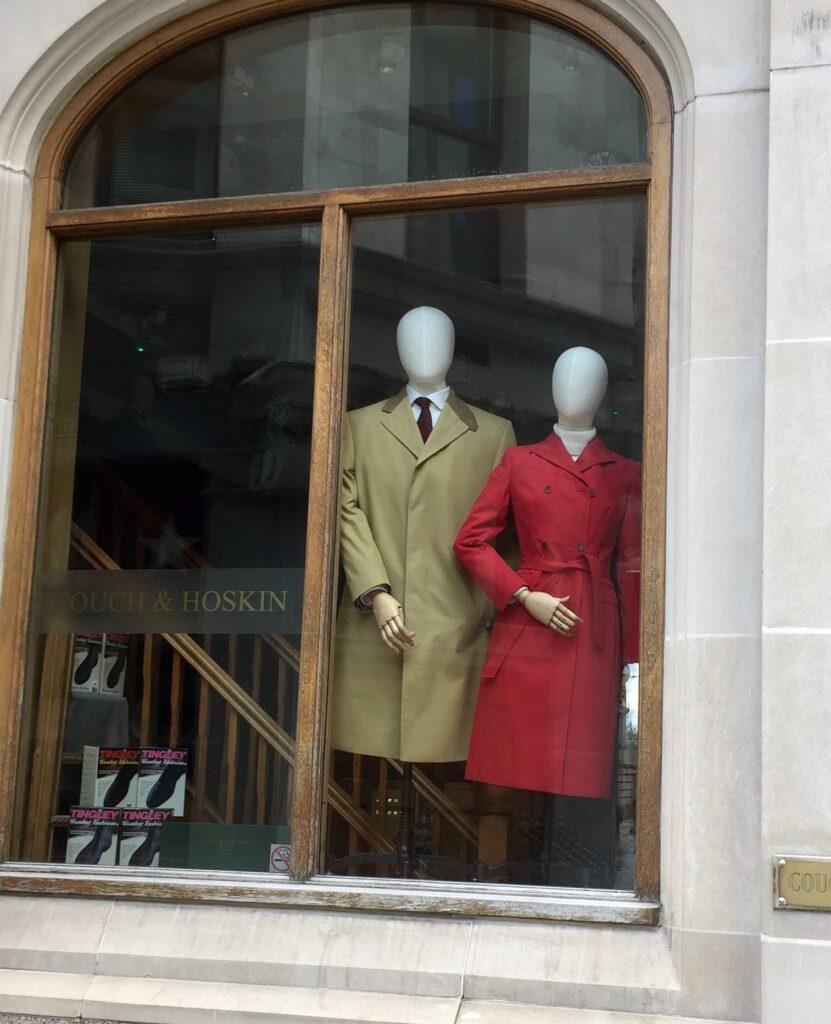It was a lovely sunny day last Saturday so I wandered along Whitecross Street to gaze at some of the wonderful art works. Many of these have been produced over the years at the famous Whitecross Street Party. Who wouldn’t smile at this splendid pair of potato heads …

Then there’s a crazy cat with a bird standing on his paw tweeting his love …

A pretty green-eyed lady being created …
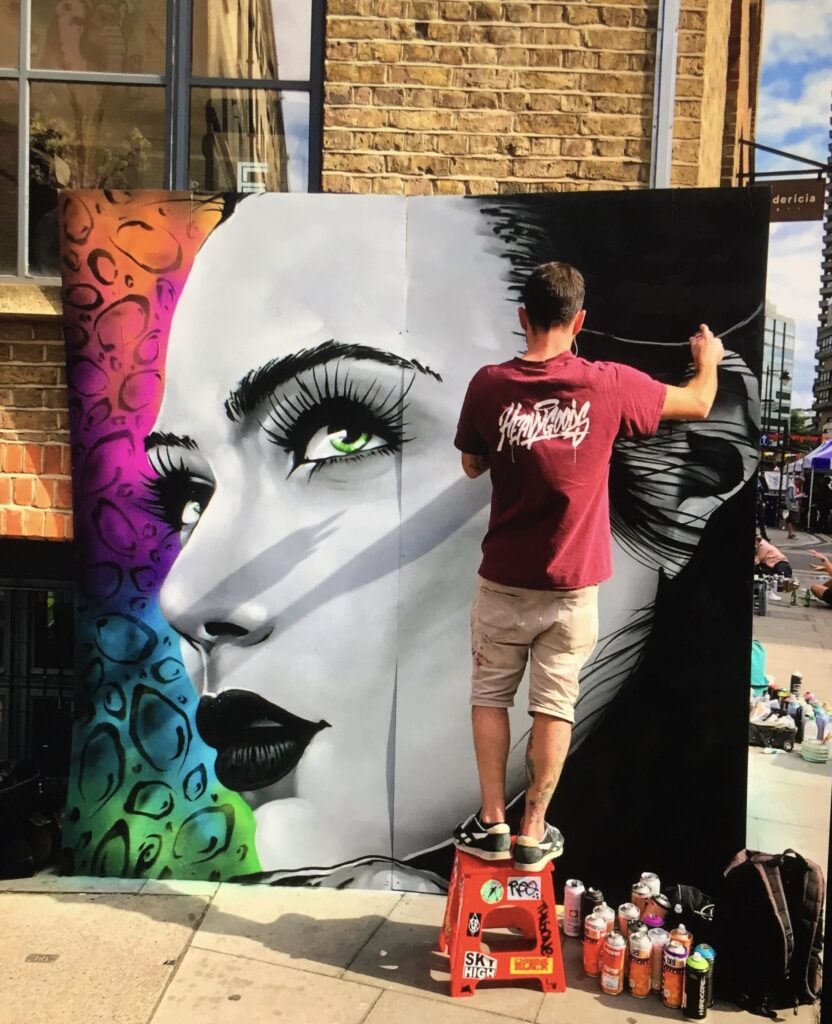
And now finished and ‘hung’ …

Laughing heads … Ho ho ho ho ho!
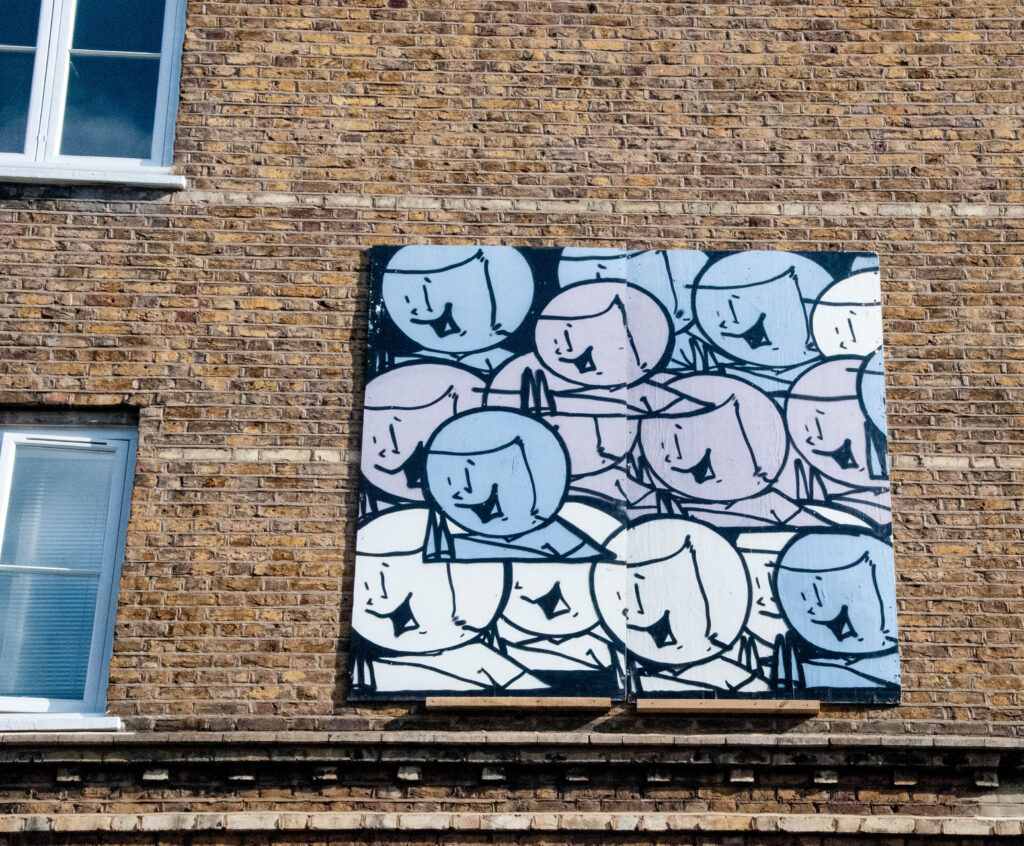
I love the colours in this abstract work …
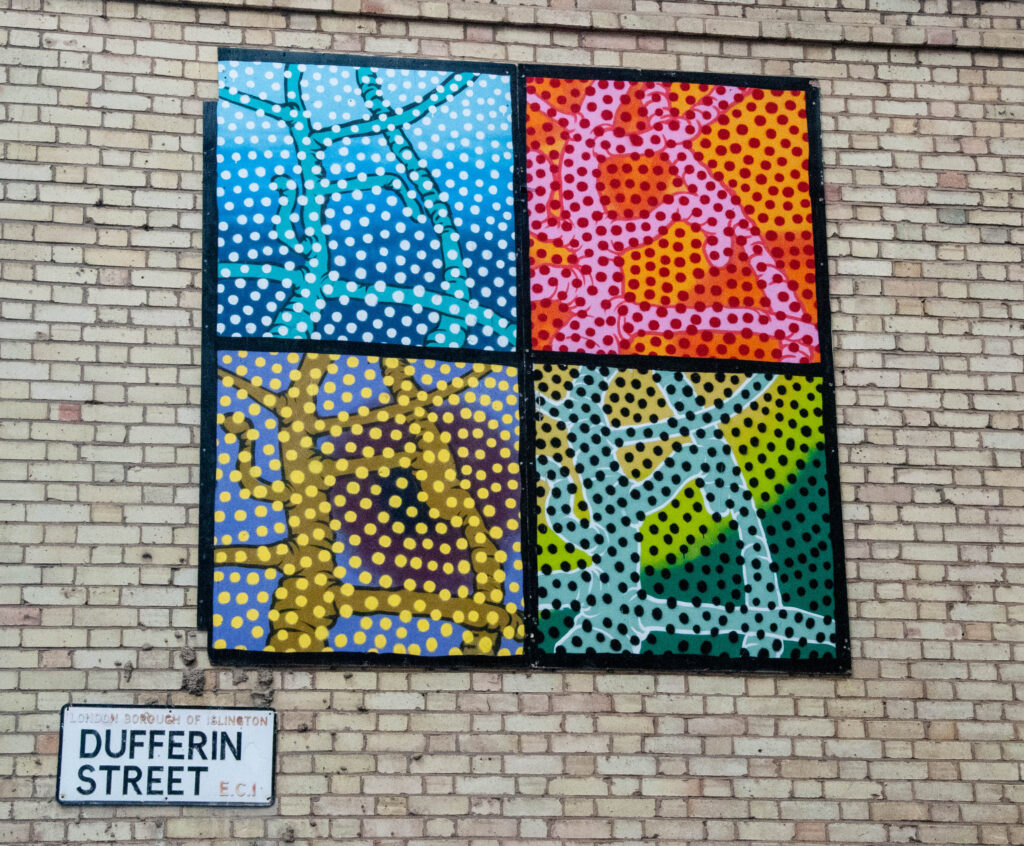
Spot the bee …
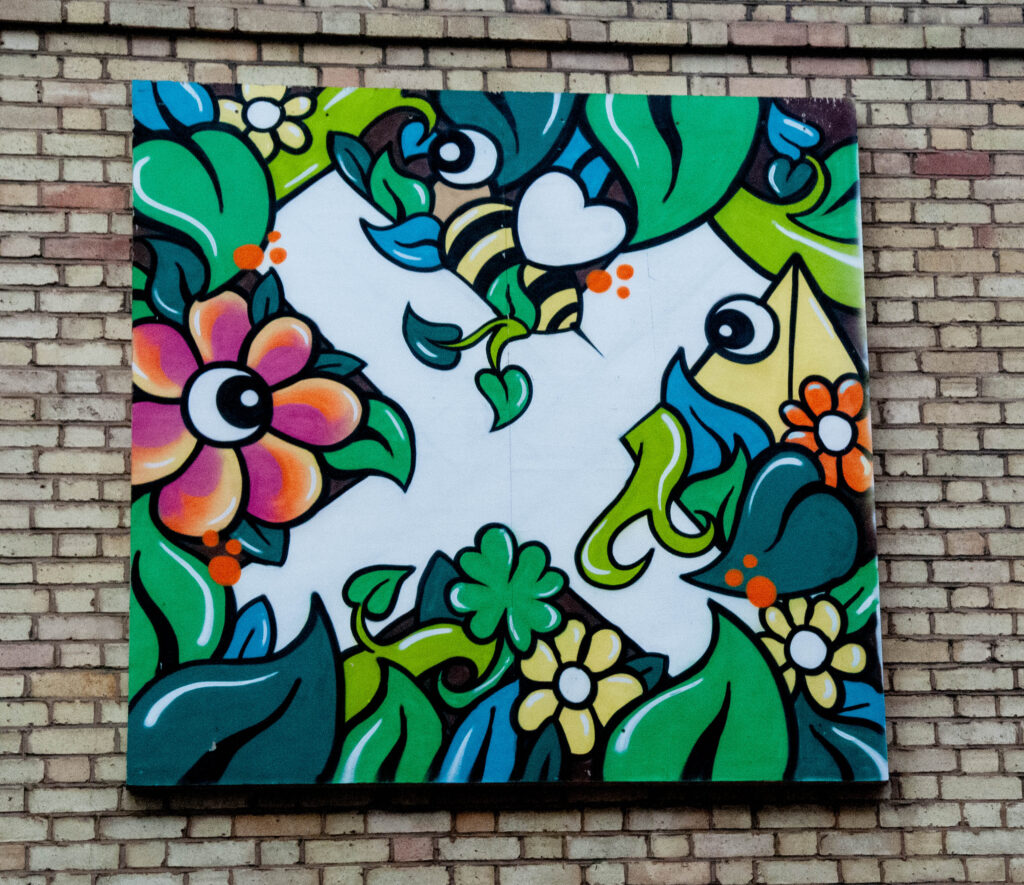
A young girl holding a spirit animal over her head and shoulders by Goya Torres (based on her Children of the Sun series). Read more about this fascinating artist here …
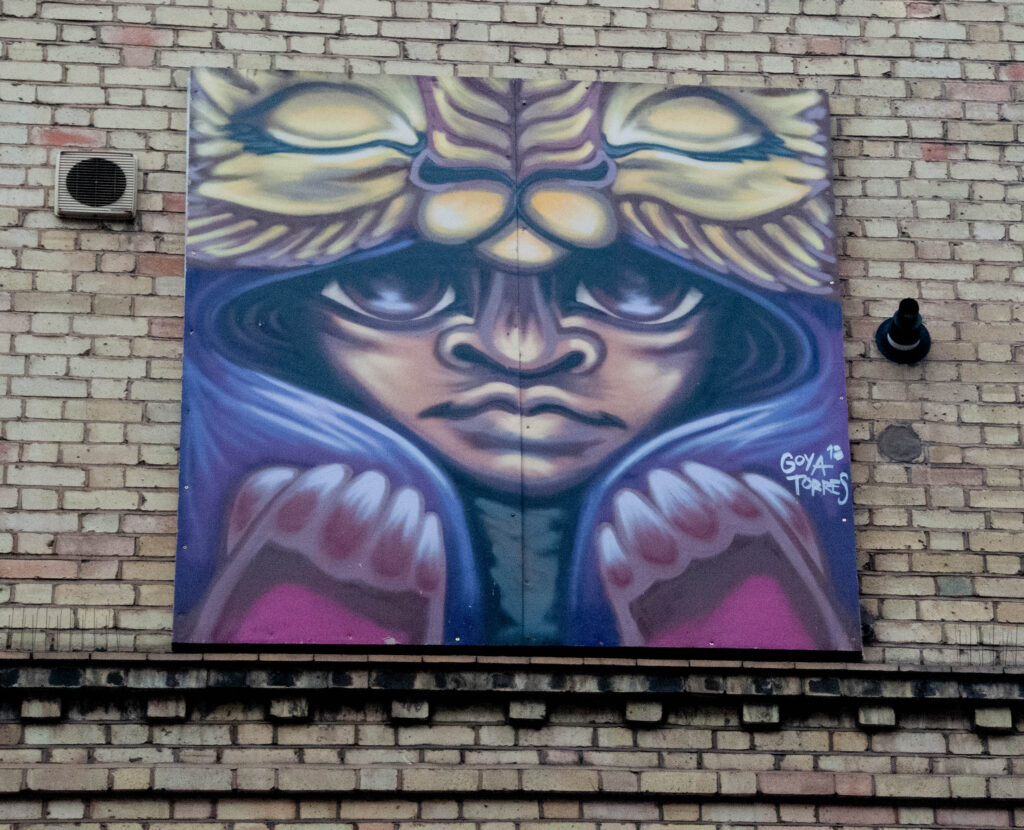
Not sure what this represents but I still like it, dynamic and colourful …
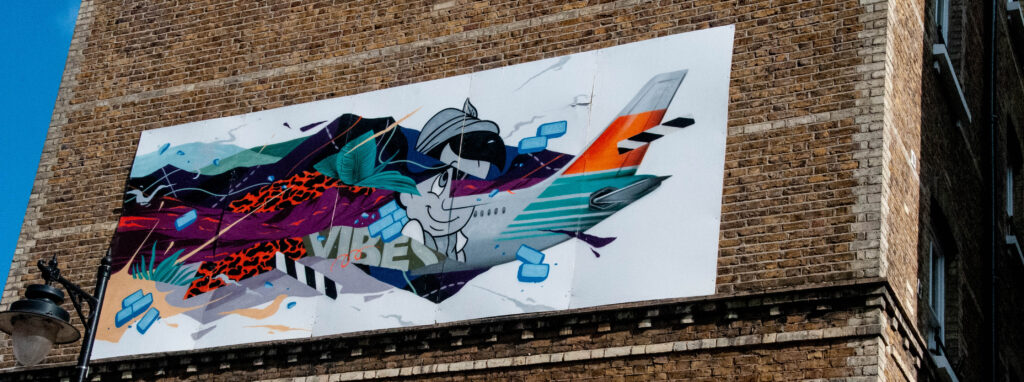
Looking north up the street you get a good view on the right of a mural by Conor Harrington, an Irish artist living and working in London. Incidentally, the church in the background is St Luke Old Street and the unusual obelisk spire is by Nicholas Hawksmoor …
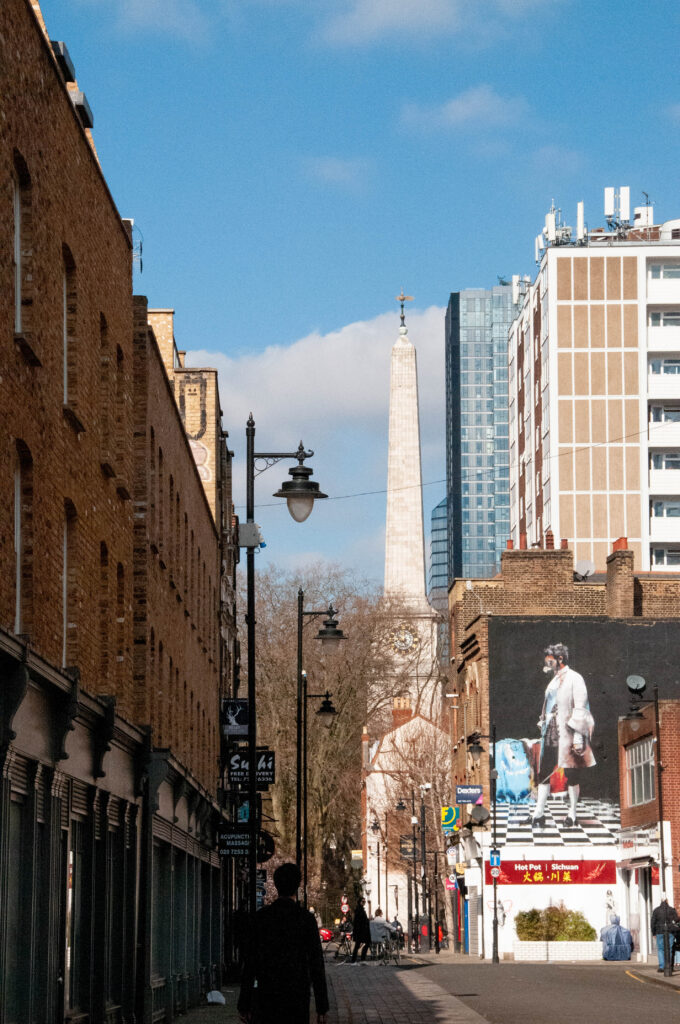
Here is Harrington’s work in more detail. It has weathered quite well considering it was created in 2012 …
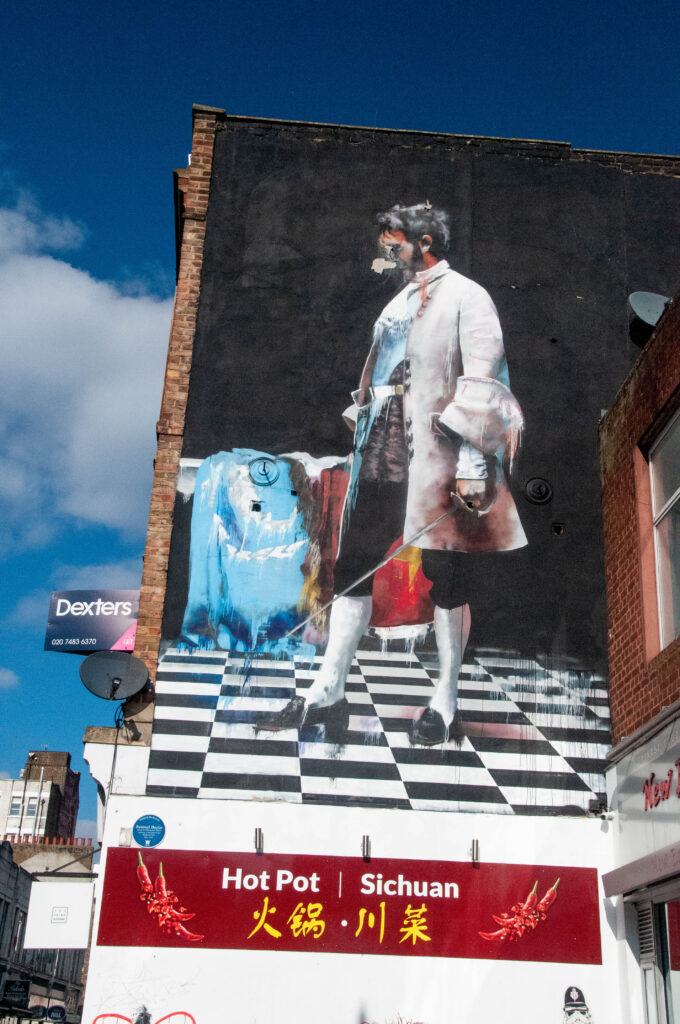
Below is a pretty, tattooed winged angel
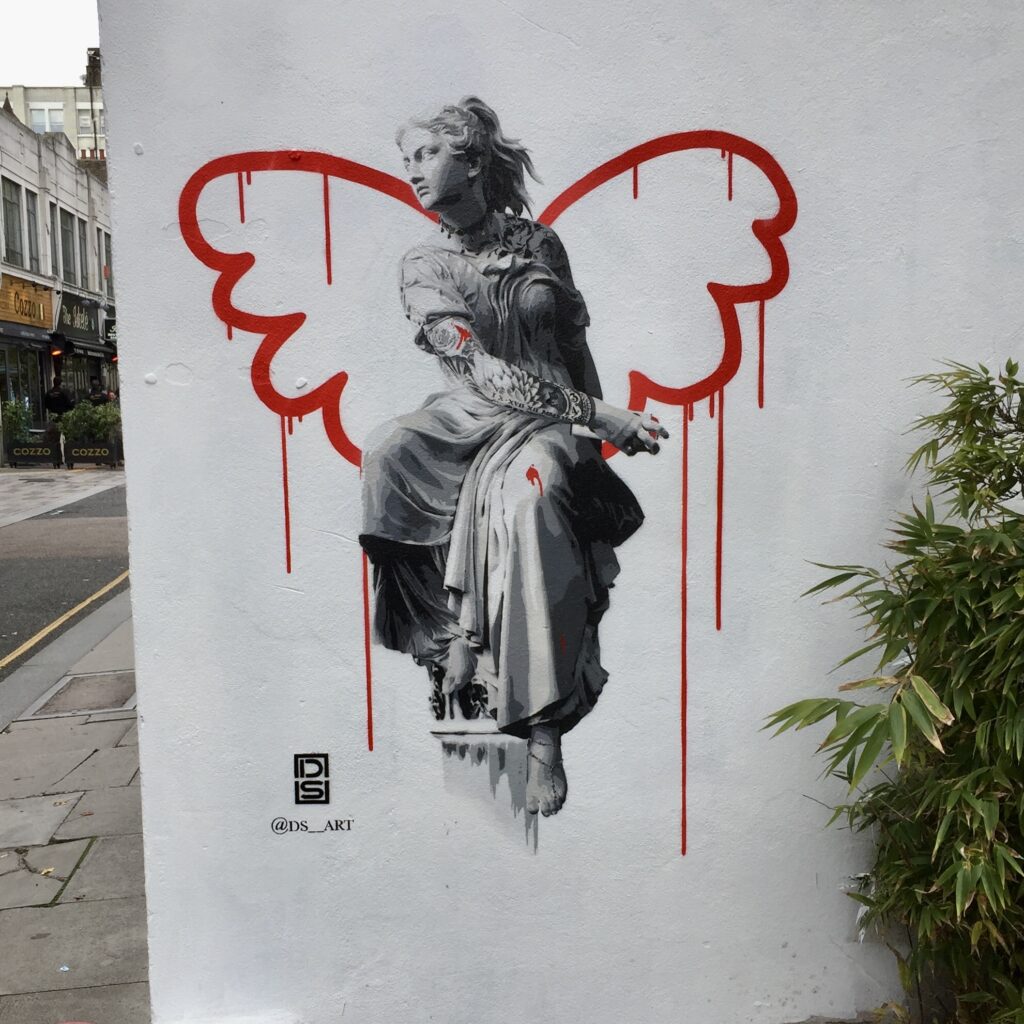
‘Oi, are you lookin’ at my bird?’ …
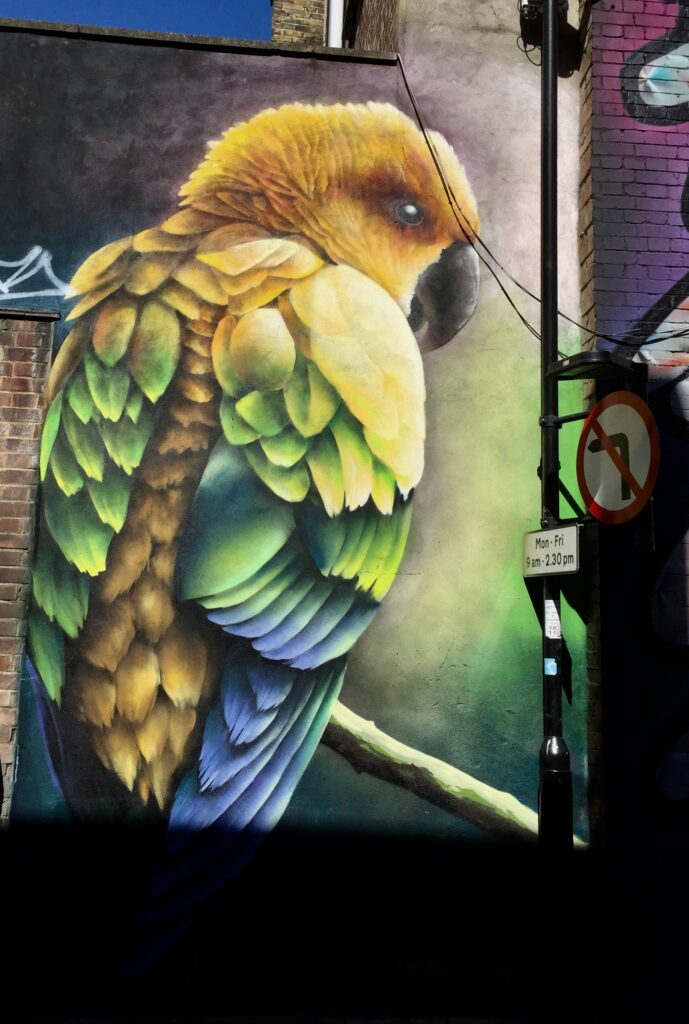
You can view more pictures and activity here on Instagram.
This year’s party is scheduled for 10th and 11th July, mid-day to 6:00 pm. Read more on the official website.
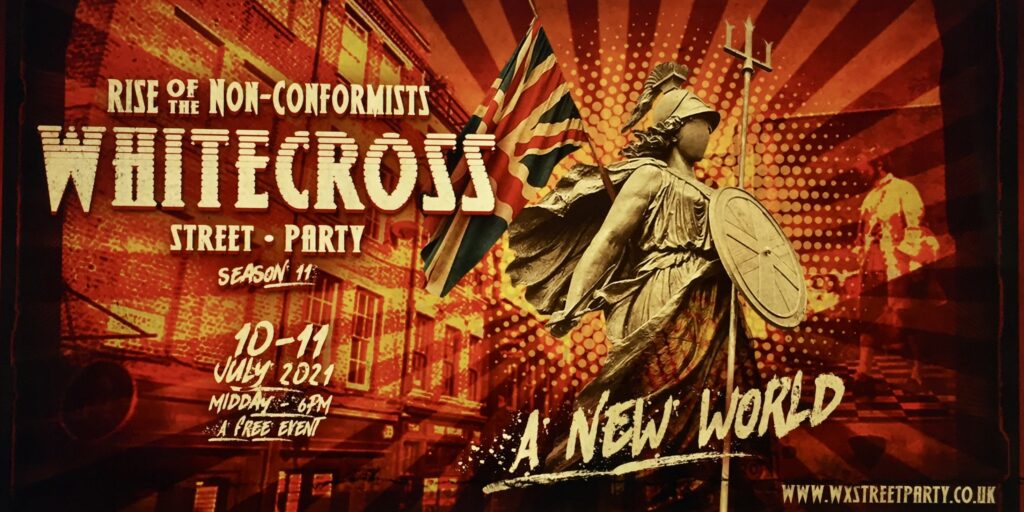
The street boasts a number of blue plaques placed there by ‘English Hedonists’ and ‘Mad in England’ …
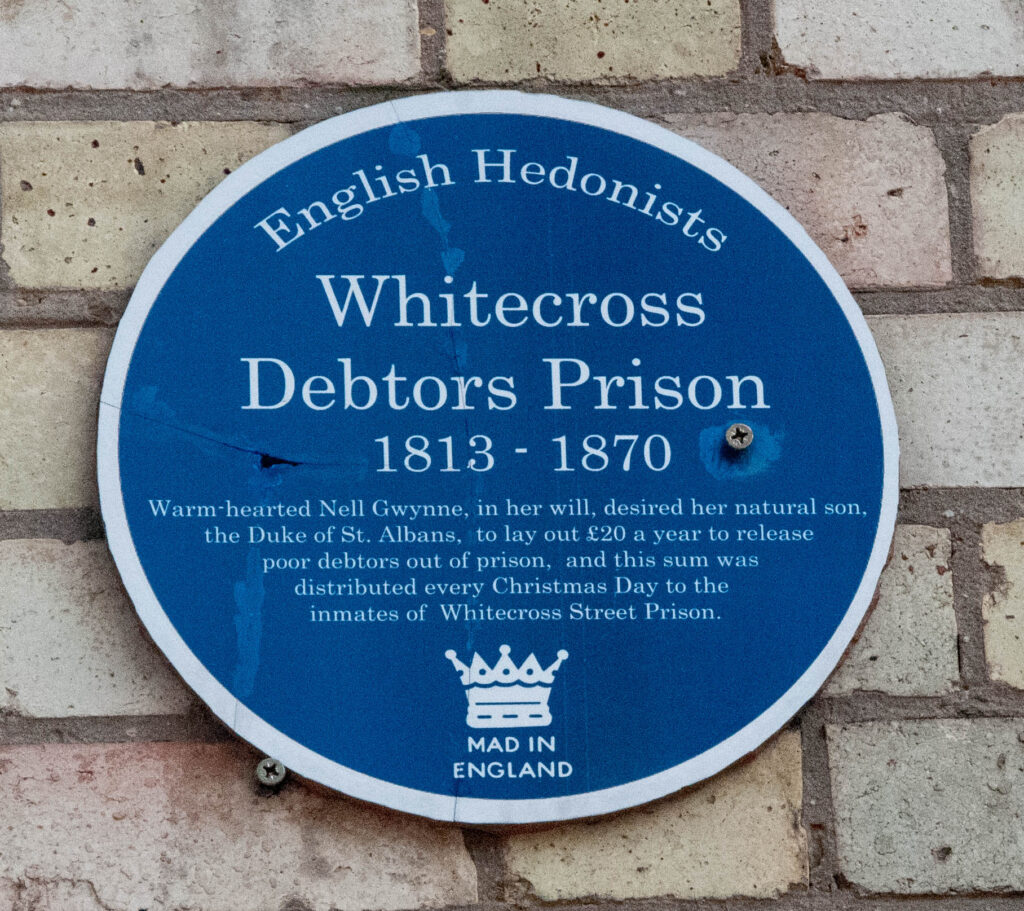
I have written about the Debtors Prison before but here it is again for those of you who missed it the first time around.
British History Online confirms the Nell Gwynne story mentioned on the plaque but I cannot find another source. It also tells us that …
A man may exist in the prison who has been accustomed to good living, though he cannot live well. All kinds of luxuries are prohibited, as are also spirituous drinks. Each man may have a pint of wine a day, but not more; and dice, cards, and all other instruments for gaming, are strictly vetoed.”
A pint of wine a day doesn’t sound too bad.
The prison was capable of holding up to 500 prisoners and Wyld’s map of London produced during the 1790s shows how extensive the premises were …
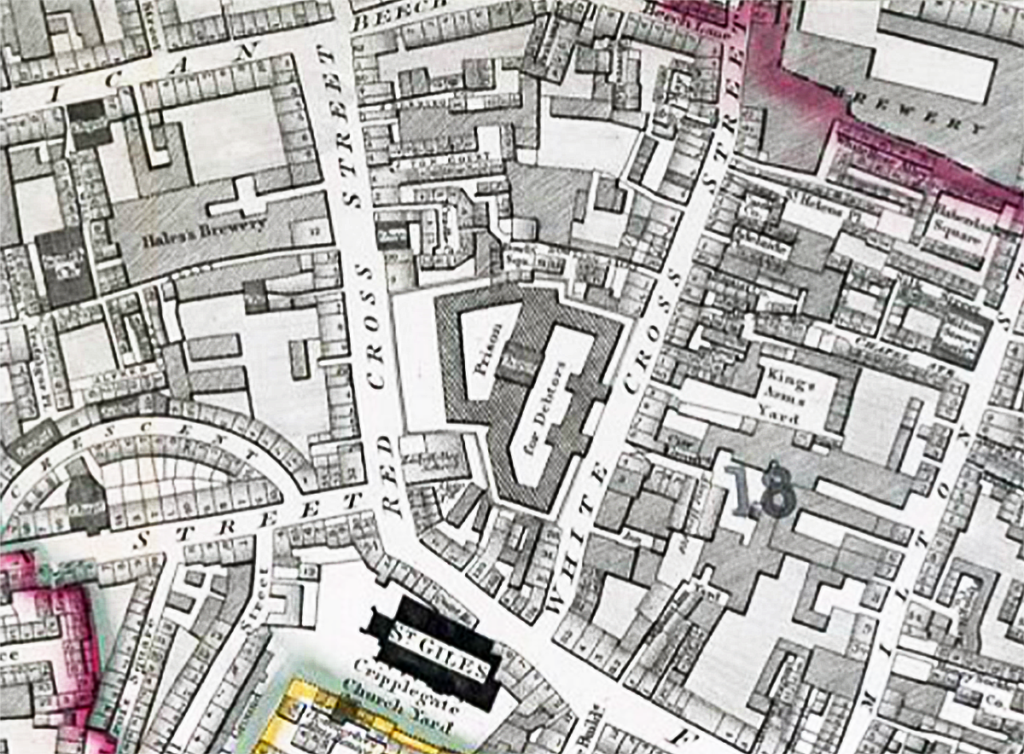
Prisoners would often take their families with them, which meant that entire communities sprang up inside the debtors’ jails, which were run as private enterprises. The community created its own economy, with jailers charging for room, food, drink and furniture, or selling concessions to others, and attorneys charging fees in fruitless efforts to get the debtors out. Prisoners’ families, including children, often had to find employment simply to cover the cost of the imprisonment. Here is a view of the inside of the Whitecross Street prison with people meeting and promenading quite normally …

Creditors were able to imprison debtors without trial until they paid what they owed or died and in the 18th century debtors comprised over half the prison population. Prisoners were by no means all poor but often middle class people in small amounts of debt. One of the largest groups was made up of shopkeepers (about 20% of prisoners) though male and female prisoners came from across society with gentlemen, cheesemongers, lawyers, wigmakers and professors rubbing shoulders.
It’s over two years since I wrote about this second plaque so here it is again.
It tells us that there once lived here a lady called Priss Fotheringham who had been ranked ‘the second best whore in the City’. This description appeared in 1660 in a serial publication called The Wandring Whore by John Garfield, which described in some detail the antics of London’s prostitutes.
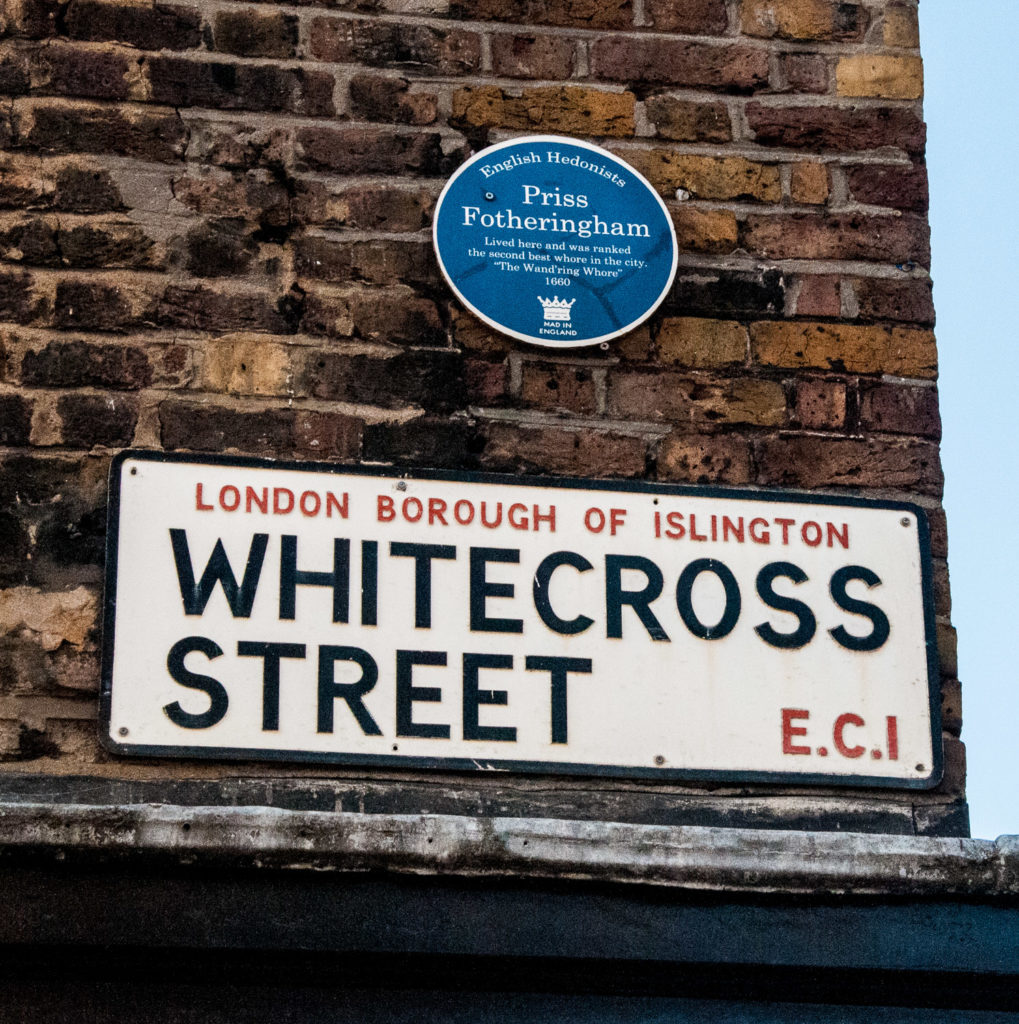
Described when young as a ‘cat-eyed gypsy, pleasing to the eye’, Priscilla Fotheringham (nee Carswell) was a colourful character very famous in her time. It is thought she was born in Scotland around 1615 and little is known of her early life. What we do know is that in 1652 she was sent to Newgate Gaol having been found in a house of ill-repute …
… sitting between two Dutchmen with her breasts naked to the waist and without stockings, drinking and singing in a very uncivil manner.
In 1658 she was still misbehaving and was bound over by a Middlesex Justice of the Peace for …
… being a notorious strumpet … that had undone several men by giving them the foul disease … and for keeping the husband of Susan Slaughter from her and for also threatening to stab said Susan Slaughter … and also for several notorious wickedness which is not fit to be named among the heathen.
She had married Edward Fotheringham, an odious character from a brothel-owning family, in 1656 and he set her up as a madam at the Jack-a-Newberry Tavern on the corner where her plaque now stands. As her looks faded with time she became more ‘creative’ in the way customers were entertained – you can read more detail in her Wikipedia entry. She made enough money to set up her own brothel and died (of syphilis) a wealthy woman around 1668.
The Whitecross Street area was at one time rather notorious, as this 17th century ballad records …
In Whitecross Street and Golden Lane
Do strapping lasses dwell,
And so there do in every street
‘Twixt that and Clerkenwell.
At Cowcross and at Smithfield
I have much pleasure found,
Where wenches like to fairies
Did often trace the ground.
Nowadays the big attraction is Waitrose.
If you would like to follow me on Instagram here is the link …
